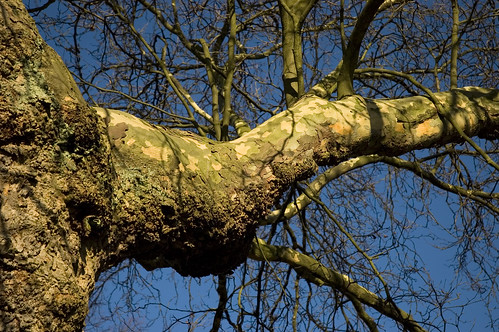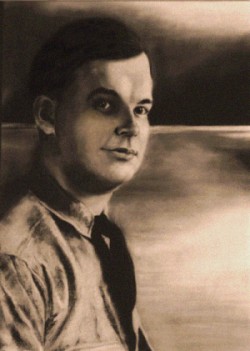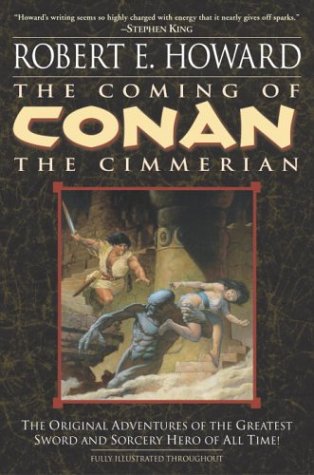5 Questions About: Ants
7 Photographs That Changed Our World
"On the Road" Turns 50
5 Questions About: Led Zeppelin
Essay: What War?
Movie Swiping, Scene-Chomping Comedic Performances
5 Questions About: Dirty Harry
Cracked-Back Book Reviews: June 2007
Poem: Shut Up
Literary Criticism
Fantastically Bad Cinema
Essays
Under God's Right Arm
June 2006
July 2006
August 2006
September 2006
October 2006
November 2006
December 2006
January 2007
February 2007
March 2007
April 2007
May 2007
June 2007
July 2007
August 2007
September 2007
October 2007
November 2007
December 2007
January 2008
February 2008
March 2008
April 2008
May 2008
June 2008
July 2008
August 2008
September 2008
October 2008
November 2008
December 2008
January 2009
February 2009
March 2009
Alcoholic Poet
Baby Got Books
Beaman's World
BiblioAddict
Biblio Brat
Bill Crider's Pop Cultural Magazine
The Bleeding Tree
Blog Cabins: Movie Reviews
A Book Blogger's Diary
BookClover
Bookgasm
Bookgirl's Nightstand
Books I Done Read
Book Stack
The Book Trib
Cold Hard Football Facts
Creator of Circumstance
D-Movie Critic
The Dark Phantom Review
The Dark Sublime
Darque Reviews
Dave's Movie Reviews
Dane of War
David H. Schleicher
Devourer of Books
A Dribble of Ink
The Drunken Severed Head
Editorial Ass
Emerging Emma
Enter the Octopus
Fatally Yours
Flickhead
The Genre Files
The Gravel Pit
Gravetapping
Hello! Yoshi
HighTalk
Highway 62
The Horrors Of It All
In No Particular Order
It's A Blog Eat Blog World
Killer Kittens From Beyond the Grave
The Lair of the Evil DM
Loose Leafs From a Commonplace
Lost in the Frame
Little Black Duck
Madam Miaow Says
McSweeney's
Metaxucafe
Mike Snider on Poetry
The Millions
Moon in the Gutter
New Movie Cynics Reviews
Naked Without Books
A Newbie's Guide to Publishing
New & Improved Ed Gorman
9 to 5 Poet
No Smoking in the Skull Cave
Orpheus Sings the Guitar Electric
Polly Frost's Blog
Pop Sensation
Raincoaster
R.A. Salvatore
Reading is My Superpower
Richard Gibson
SciFi Chick
She Is Too Fond Of Books
The Short Review
Small Crimes
So Many Books
The Soulless Machine Review
Sunset Gun
That Shakesperherian Rag
Thorne's World
The Toasted Scrimitar
This Distracted Globe
Tomb It May Concern
2 Blowhards
Under God's Right Arm
A Variety of Words
The Vault of Horrr
Ward 6
When the Dead Walk the Earth
The World in the Satin Bag
Zoe's Fantasy
Zombo's Closet of Horror
Bookaholic Blogring
Power By Ringsurf

(Having just spent the last 10 days rocking on a hammock, DaRK PaRTY suddenly has a strong love of trees. After all, hammocks work so much better when attached to trees. But it is difficult to adore trees without thinking about one of the most popular poems of all time – “Trees” by Joyce Kilmer. Hmmm, we thought. What about this fellow Kilmer? Who was he? So who better to give us the lowdown than Kilmer’s granddaughter Miriam A. Kilmer. She operates a Web site dedicated to her grandfather. Miriam is an artist who runs Rising Dove Fine Arts and Services. She was more than happy to spend some time talking about her famous grandfather.)
DaRK PaRTY: How would you describe your grandfather for those unfamiliar with him?
Miriam: Since Joyce Kilmer died before I was born, I rely on the descriptions of my father and Robert Cortes Holliday. According to them, he was partial to good company, a very emotional and spontaneous person, an outdoorsman as well as a literary man and fond of his drink. He was an idealist who threw himself whole-heartedly into the causes he espoused, becoming an atheist when he was a Socialist, and then a devout Catholic upon his conversion after he was disillusioned by Socialism. He was a loving family man, but his dedication to his country and his horror at the sinking of the
DP: His poem "Trees" -- one of the most popular in the world -- is often savaged by critics. What do you think of "Trees?"
Miriam: I think "Trees" is a lovely, simple poem, accessible to many, that does not stand up to severe literary criticism. It is not, and was never meant to be, a great poem. The whole point, after all, is that trees outshine poetry. It suffers from being set to music, for which it was never intended. It is not my favorite of Joyce Kilmer's poems, but it is the one that people love, and I have no argument with that. I am glad that it is used to foster reverence for the environment, and specifically for the dedication of tree plantings.
DP: Most of his other poems are often overlooked. Which poem of his is your favorite and why?
Miriam: My favorite keeps changing. Just now I prefer "The Snowman in the Yard," which reflects his devotion to his children. It's very homey and deals with ordinary things, and I find it very moving.
DP: What do you think is the biggest misconception about your grandfather?
Miriam: I guess I would have to say it's the notion that he was a saint. I think that idea is based on the reading of the one poem, "Trees," and not on any study of his life. He had the ordinary foibles of us all, and hated the Germans with a passion. I don't think he had any extraordinary virtue that would make him a saint except in the sense that everyone of good will is a saint.
DP: Your grandfather was a sergeant with the Fighting 69th during the Great War and was killed in combat at the age of 31. What do you think his career would have been like had he survived and continued to write?
Miriam: I think Joyce Kilmer showed promise, and it's possible that he could have become a leading poet if he had continued in the vein of poems such as "Delicatessen" and "The Blue Valentine." However, I think it's more likely that he would have continued to make more important contributions as an editor and poetry critic.
(Pastel Portrait copyright Miriam A. Kilmer 2000, used with permission).
Read our interview about modern poetry here
Labels: 5 Questions, interview, Joyce Kilmer, Miriam Kilmer, Poetry
 StumbleUpon |
StumbleUpon |
 del.icio.us |
del.icio.us |
 Technorati |
Technorati |
 Anonymous said...
Anonymous said...
 GFS3 said...
GFS3 said...

This work is licensed under a Creative Commons Attribution-No Derivative Works 3.0 License.
The Template is generated via PsycHo and is Licensed.




